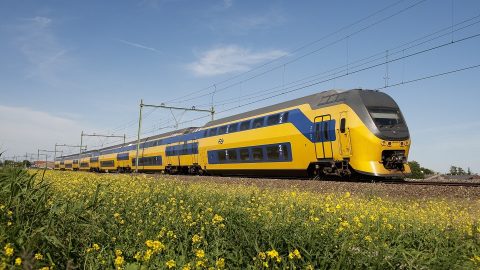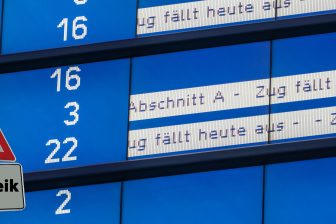
Double-deckers may become standard for train procurement in Netherlands
To cater for the growth in the number of rail passengers, Dutch MP Mustafa Amhaouch (CDA) would like new trains purchased to be double-deckers as standard. He made this clear in a parliamentary question he put forward following a report from Nederlandse Spoorwegen (NS) that the capacity ceiling on the railway network will be reached by 2027.
It is not the first time that the MP has called for double-deckers. Back in April, Amhaouch asked for the application of the ‘comply or explain’ principle, so that investment in double-decker trains is the standard. According to this principle, if organisations do not comply with this standard, they need to explain why. But until now, Amhaouch has not seen any response from NS to the question he and fellow MP Rutger Schonis (D66) posed about investment in double-decker trains. Secretary of State Stientje van Veldhoven has promised to send the answer to the House of Representatives (Tweede Kamer).
The new ICNG intercity trains that NS has ordered, which will come into service next year, are single-decker trains. One of the advantages is that single-decker trains are often considered more accessible. However, according to Amhaouch, there are innovative solutions to make double-decker trains more accessible.
Forecast
Recently published figures from NS for the first half of 2019 show that trains are gaining in popularity quicker than expected. While the National Market and Capacity Analysis (NMCA) projected that the capacity ceiling would be reached in 2030, NS forecast that it would happen three years earlier. This was a surprise to CDA’s railway spokesperson.
Amhaouch wants to find out from the Secretary of State how it is possible that the forecasts of NS and NMCA differ. This is important because it is the latest analysis that is used to determine what infrastructure is required. Furthermore, Amhaouch has asked Van Veldhoven if she trusts the NS forecast, and which forecast she will use going forward.
Questions
- Are you familiar with the report ‘Halfjaarcijfers NS: Reizigersgroei zet door, spoorplafond in zicht’ (‘NS half-yearly figures: Passenger growth continues, capacity ceiling looming’)?
- What models, figures and calculations are the new NS forecast based on? To what extent is this forecast reliable? What forecast do you believe is the most reliable, and which forecast will you use going forward: that of the NMCA, or the one from NS?
- How is it possible that NS forecasts that the ceiling will be reached in 2027, while according to the National Market and Capacity Analysis (NMCA), whose analysis the government uses to determine required infrastructure, this will not happen until 2030?
- Could you state exactly what the differences are between the models? For example, how do the NS and NMCA forecasts take account of possible changes in economic growth and satisfaction in rail as a mode of transport?
- Could you state on what basis it has been predicted that if the trend from the first half of this year continues, the ceiling could be reached as early as 2025? What is the reason behind this?
- Could you indicate the top 10 routes where the capacity problem is the biggest? How many of the capacity problems of the top 10 are outside of rush hour?
- What do you think of the assertion by Van Boxtel (CEO of NS) that the budget for ProRail must be made available more quickly to resolve the bottlenecks in the infrastructure before 2027? Is this actually necessary, and if so, why?
- How much money has been spent on new trains in the last five years? How much of this is replacement hardware, and how much is additional hardware?
- Could you state what the current ratio is between investment in single- and double-decker trains, and how this ratio has changed in the last five years?
- Do you agree with CDA that, in order to increase capacity on the rail network, it would be sensible to apply the ‘comply or explain’ principle, so that investment in double-decker trains is seen as standard? Could you explain the reasons for your answer?
- Could you state when a copy of the answer from NS in response to questions about investment in double-decker trains, which was promised at the Rail Plenary Debate (VAO Spoor) on 18-4-2019, will be sent to the House of Representatives?
- Could you state what the situation is with regard to curtailing peaks on the rail network by staggering passenger journeys, for example by moving university lecture times or working timetables? Are you in discussion with employers and educational institutions in order to work together and stagger journey times? How much priority are you giving to this solution?



